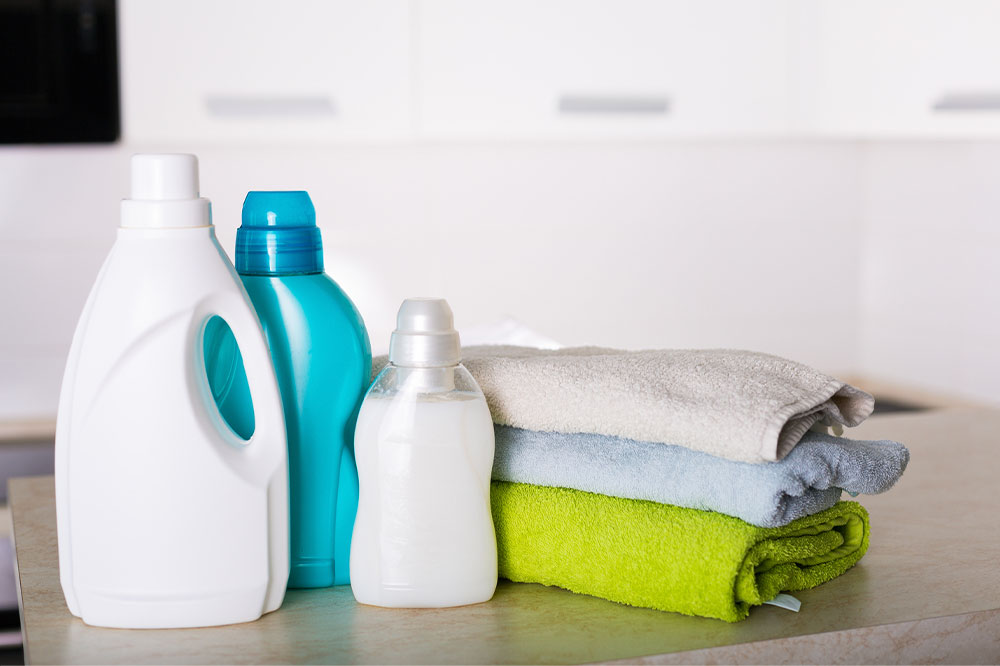Top 6 laundry detergents to consider

Every household has a list of cleaning essentials that they swear by. We tend to stick to one brand, especially in cases of laundry detergent, if they satisfy our need for them. The laundry detergent market is rapidly growing, and all of them market their products as capable of removing every stain and restoring the cloth’s texture. You can also consider your product from good quality laundry detergents suitable for different fabrics and skin types.
Tips to consider while buying laundry detergent:
- Look for laundry detergents marked High-Efficiency if you want to conserve water.
- If you are conscious of the detergent’s environmental impact, choose detergents marked as eco-friendly or green.
- Choose detergents that contain safe bleach alternatives.
- If you or a family member have sensitive skin, look for a hypoallergenic formula that does not contain perfumes or dyes.
- Read the machine manual before choosing the detergent, as they will suggest the type of detergent to use
- If you are purchasing a detergent to remove hard stains primarily, then look for detergents that contain enzymes.
- Avoid harsh chemicals, especially if you are using natural fabric.
- Invest in good-quality detergents, and do not let lower prices be the sole criteria for making your decision.
- Detergents are available in conventional and liquid forms, pods, and tablets. Most detergent manufactures offer their product in each of the forms.
- While organic and plant-based detergents may not be 100% chemical free, they may contain safe and non-toxic chemicals.
Six best laundry detergents to consider:
Keeping the tips in mind, here is a list of laundry detergents that you should make your top choice:
Persil’s ProClean Liquid Odor-Fighter Laundry Detergent
Persil’s ProClean Liquid Odor-Fighter Laundry Detergent has an efficient odor-eliminating technology and offers a premium cleaning experience with lasting freshness. The detergent removes tough stains and can be used for delicates and all types of fabrics. It is also compatible with all types of machines, including High-Efficiency machines.
One bottle of detergent will last you for around 80 loads. The product was also ranked as the Noted Product of the Year in a Consumer Survey of Production Innovation in 2022. However, if you are looking for a hypoallergenic formula, you can consider using the Persil Sensitive Skin 2x, which is perfume and dye free.
Earth Breeze Laundry Detergent Eco Sheets
One of the top choices of laundry detergent, especially if you want to buy an eco-friendly detergent, is the Earth Breeze Laundry Eco Sheets. The detergent is in the form of sheets and will quickly dissolve in warm and cold water, and it is also compatible with HE efficiencies. While eco-friendly detergents have a bad rep for their incapacity to remove rough stains, experts have tested the Earth Breeze detergent and have confirmed that it removes tough stains. You can use two sheets instead of one to wash heavily soiled or large loads.
Tide Hygienic Clean Heavy 10x Duty Power PODS Laundry Detergent Soap Pods
The Tide Hygienic Clean Heavy 10x Duty Power PODS Laundry Detergent Soap Pods is one of the most popular and cost-effective detergents in the market today. The product contains ten active cleaning ingredients, proven to remove visible and invisible dirt. It is effective in soft, hard, cold, and hot water settings and machine types and is the best seller in household products in various online sites and physical stores. The detergent effectively deals with grease, oil, and food stains and is gentle with the fabric while simultaneously providing your clothes a hygienic clean. If you want a detergent that cleans your clothes at a microscopic level and fights odor, you do not have to look beyond the Tide Hygienic Clean Heavy 10x Duty Power PODS Laundry Detergent Soap Pods.
Kirkland Signature Ultra Clean HE Liquid Laundry Detergent
Kirkland Signature Ultra Clean HE Liquid Laundry Detergent is one of the top budget picks for high-quality detergent. It is one of the best in removing strong odors and can remove heavy makeup stains. It is priced at $17, which is a fair price for the quality of the product, and costs almost half of the other top players in the market.
The detergent also contains a patented catch-and-release technology which is tough on grease and dirt. The detergent has a fresh ‘clean’ scent which loyal customers list as a deciding factor when choosing to repurchase the detergent.
Seventh Generation Concentrated Laundry Detergent
The Seventh-Generation detergent line is known for its liquid detergents and single-dose pods. The Seventh Generation Concentrated Laundry Detergent is plant-based and does not contain synthetic chemicals or optical brighteners. It is a versatile detergent used in all types of machines, including high-efficiency ones. It is unscented and is phosphate and gluten-free. It is a hypoallergenic laundry detergent made for sensitive skin. The product has effectively removed stains, even those in heavy military gear, and is also EPA Safer Choice Certified.
Molly’s Suds Unscented Laundry Detergent Powder
The Molly’s Suds Unscented, Laundry Detergent Powder, is an unscented powder that is safe for all types of washers and is made of a vegan formula. Since the detergent is sufficiently concentrated, you can use them for approximately 110-120 loads.
The product is tested safe for everyone, especially people with sensitive skin. It is safe for children’s clothing and should be used in warm or hot water for the best results. The detergent can tackle grass stains and food stains equally well. While the unscented product is their seller, it is also available in peppermint and citrus scents. In addition, the detergent is also septic-safe and grey-water-safe.
Conclusion
There is a range of good quality detergents that cater to specific needs. Once you are clear about the results you want and whether you will use the detergent for daily or professional use, it makes your choice easy. Compare prices and expert opinions to choose the detergent which will become a staple in your household.

